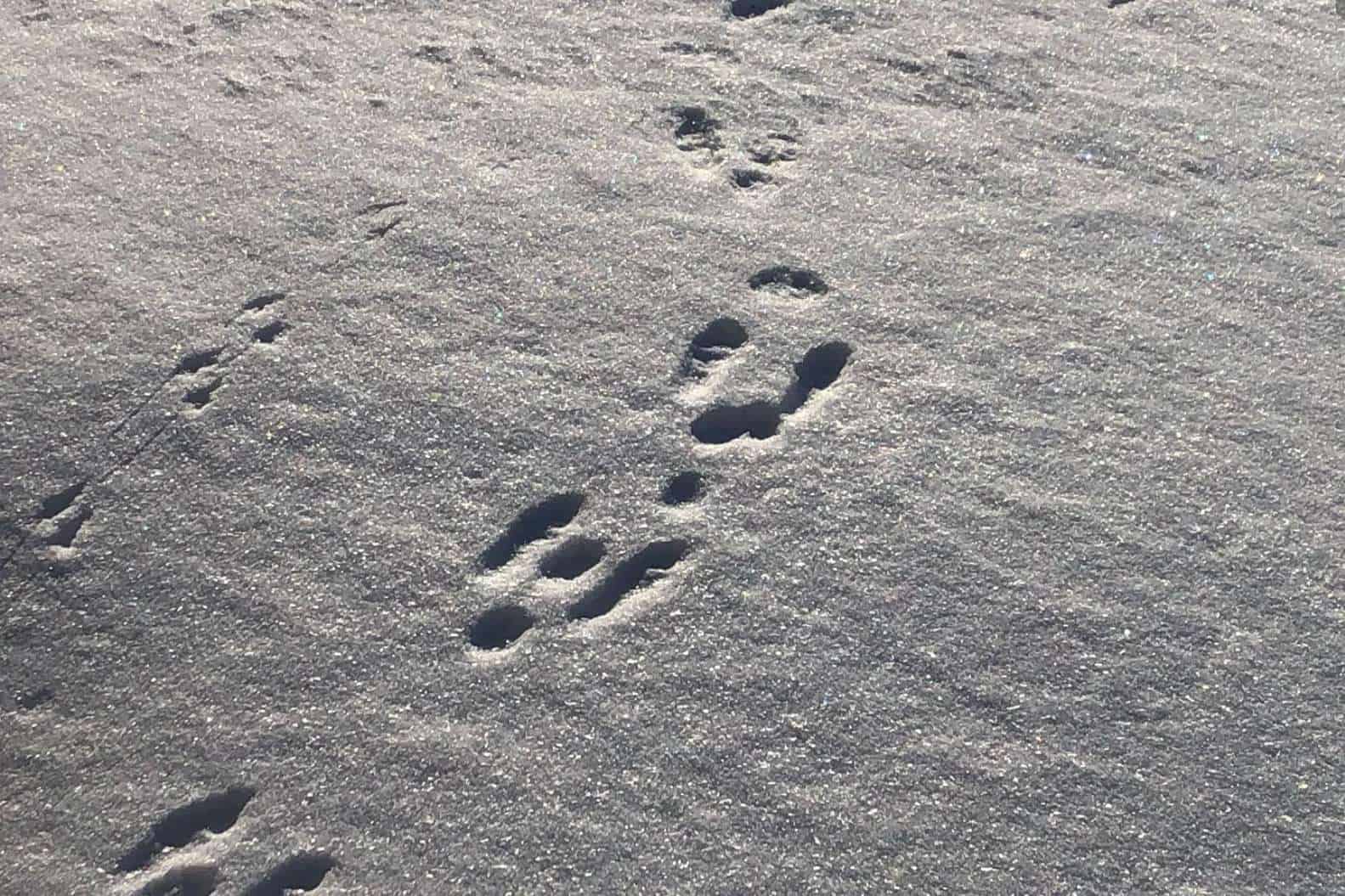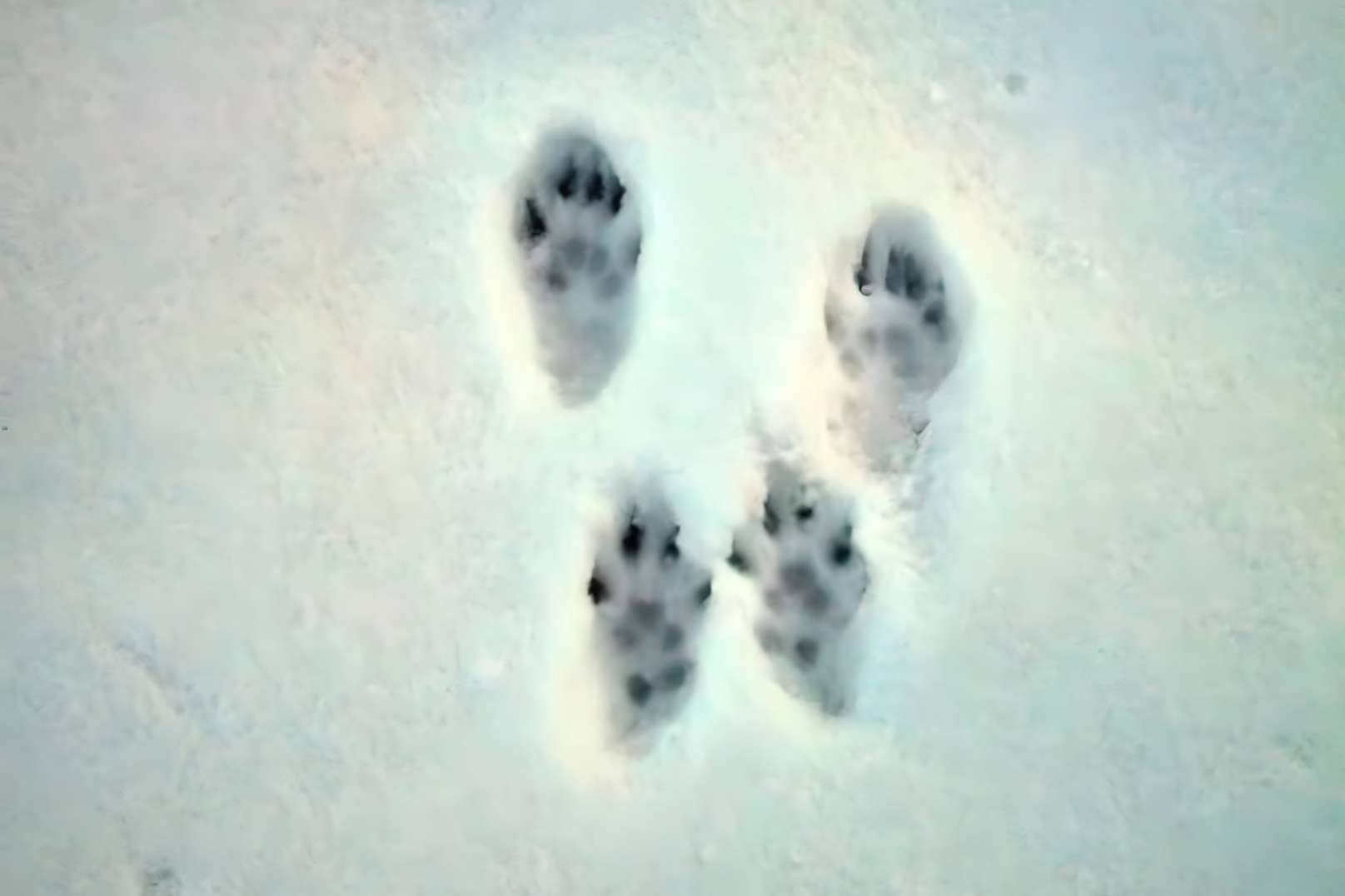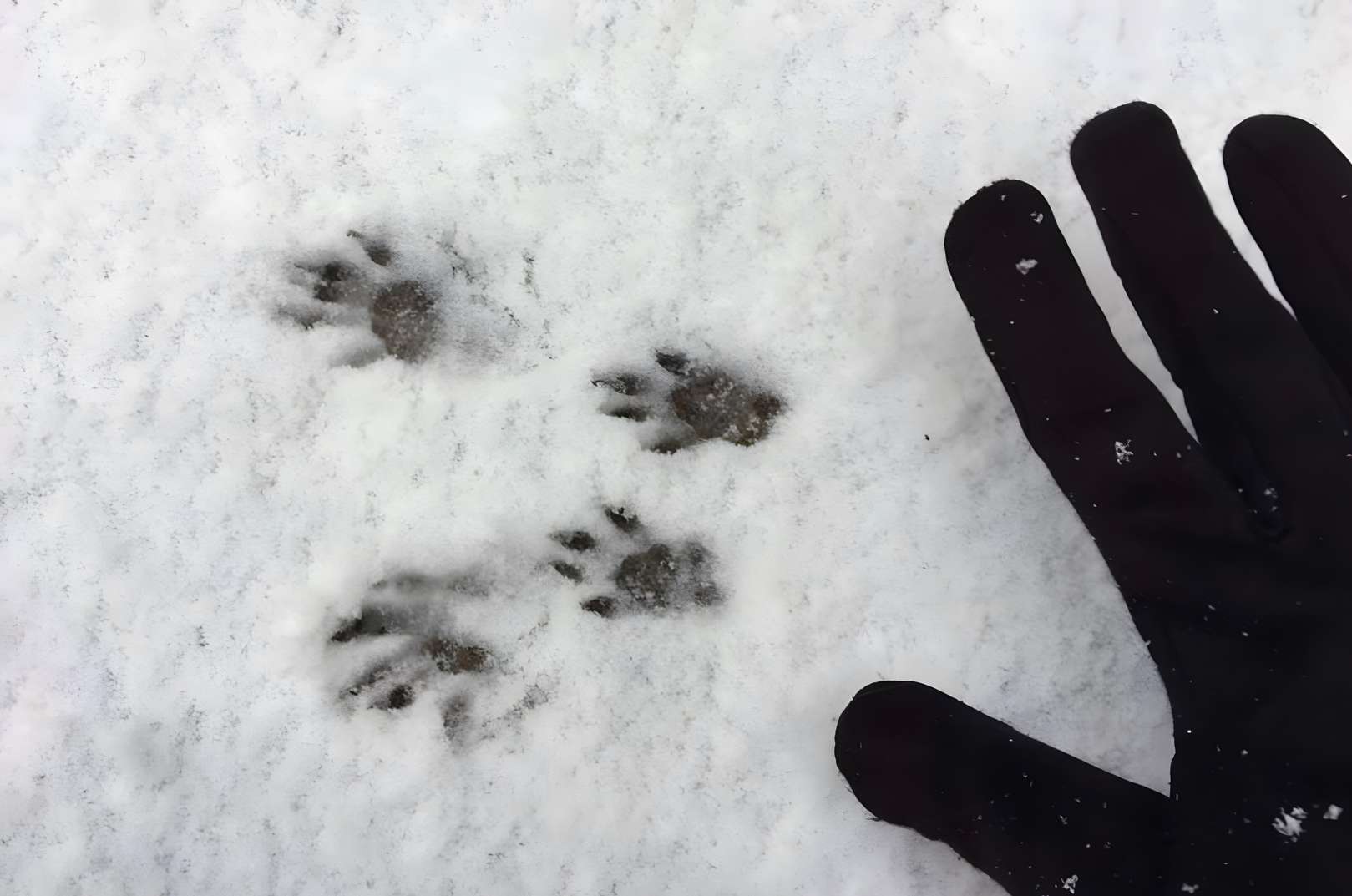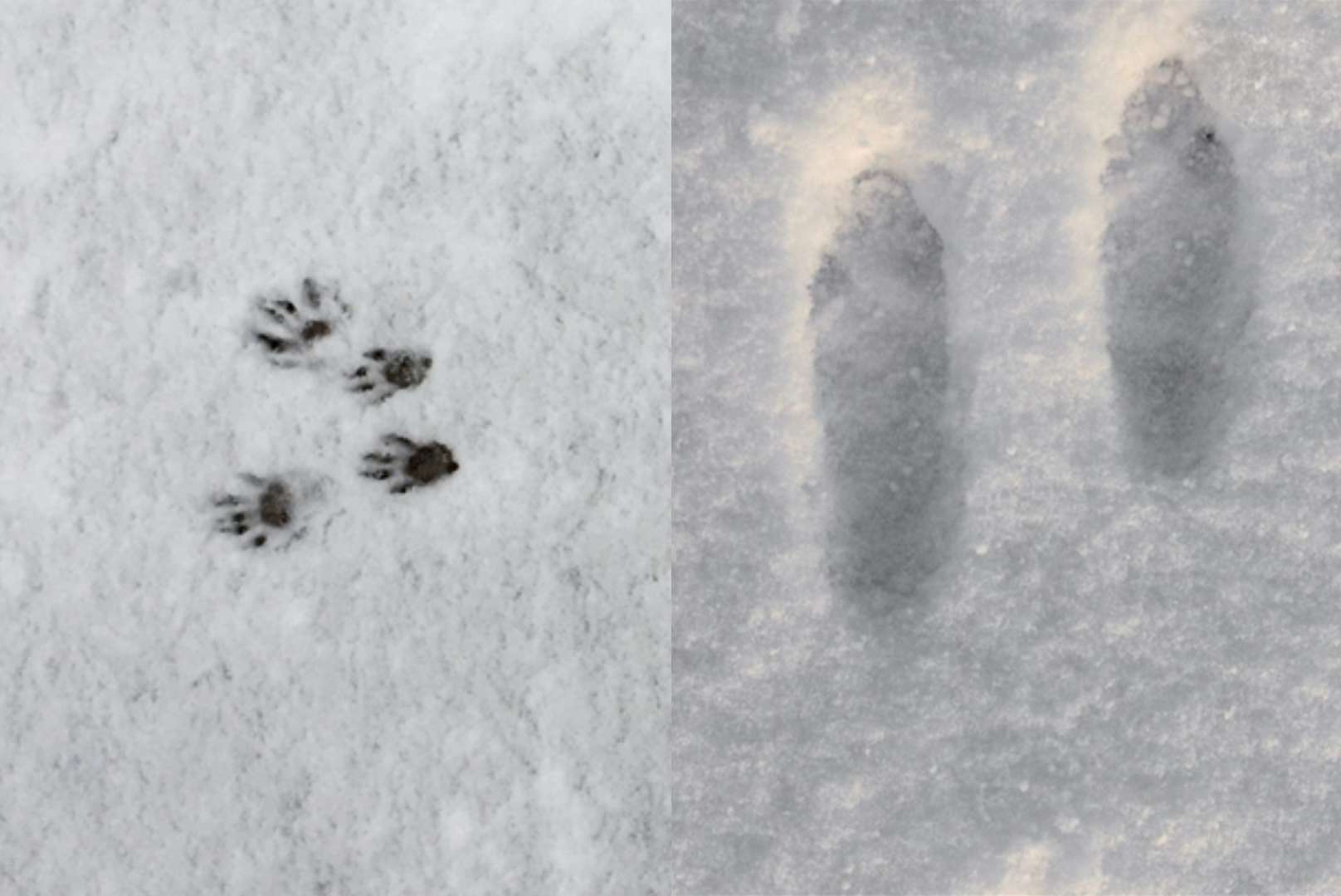Perhaps you want to know who is causing some issues in the backyard, or maybe you suspect your rabbit has been going out and about.
However, it’s snowing, so there are several tracks outside, which is very confusing. In these situations, it’s helpful to know how to identify rabbit and squirrel tracks in the snow as they are very similar too.
Tracks In The Snow
Tracking can either be a one-time thing or a hobby you like to do. If so, there are conditions when you are tracking too. With these conditions perfectly put together, you are closer to good results.
Thus, tracking is not solely “tracking” for the sake of it. This process has conditions of its own. It is strategic, so you have to successfully use your skills and knowledge to track.
Time
Time is paramount when tracking in the snow. In the past, our ancestors knew the time by the sun’s placement. The sun and lighting are essential in tracking. Depending on the time, the angle of light striking the tracks is different.
This means there are angles when it’s hard to assess the tracks, and there are times when it’s easier. When tracking in the snow, the best times are morning and early evening.
The light creates a shade in the tracks (prints). These shades can either be “in” the prints or behind them. Nevertheless, tracking in the morning up to early evening is more ideal than doing it some other time.
Right gear
When tracking amidst the cold weather, it’s essential to wear the necessary gear. It might be too cold, or the air must be frosty when tracking in snow, so wearing the right clothes is non-negotiable.
If your area is prone to snowstorms, it’s wise to check the weather situation now and then. One more thing is to be ready in case of anything that’s out of plan happening. It’s wise to bring emergency kits and other essential items.
Signs
If you are serious about your tracking, you will know that good tracking requires a constant search for signs. As for rabbits, for example, it’s wise to look for droppings and continue to assess from there.
Identifying Rabbit Tracks
Rabbits like to hop around outside, so they are more likely to take the opportunity when presented with one. This might be pretty challenging for rabbit owners, especially if it’s their first time having their rabbit outside.
If this happens during the snowy season, the importance of familiarizing your rabbit’s rabbit track is emphasized. If you are familiar with their tracks, it would be much easier to spot them and eventually locate your bunny.
To start, you might want to clear areas where other pets are present. If you have dogs and cats, remove the sites and look in places close to your rabbit’s pace. Even though they are easily scared, they prefer being somewhere they know. Thus, look closely near your home first to save time.
A rabbit track is usually in the shape of a tall rectangle. The entirety of the rabbit track is composed of four tall rectangles. You can look at track patterns and guess or assess the speed your rabbit is going.
Observing Rabbit Track Patterns
Normal speed
When a rabbit runs, hops, or moves at a typical speed, the four footprints typically form a capital letter J. Your bunny does this with the larger back feet dropping side by side, making the top bar of the J, and simultaneously, the smaller front feet laying behind the others form the base of the J.
Rabbits walk by first planting their front feet (smaller paws) upon the ground. To complete the stride, the next move would be swinging their massive back feet forward just in front of their front smaller feet. The front feet are usually visible behind the back feet in track patterns.
Faster Speed
On the other hand, when your rabbit is moving at its speediest, there are changes in its track too. When driving quickly, the ways will form an inverted triangle. The rabbit’s front feet create the back point of a triangle.
The front feet drop parallel and close enough together. The distance makes it seem like one footprint instead of two. The hind feet remain in their forward position, as observed in the overall track. And so, to form the triangle’s other two points, they need to be also parallel to each other.
Pause
Only his enormous rear feet will be visible whenever a rabbit pauses for a bit of a moment. This is because he stands to do either of the following; chew something, look above him, or gaze around their environment.
On the other hand, when a rabbit is resting, its tinier front feet can either slip between or slightly ahead of the rear legs. In one region, you could see a variety of track kinds.
Distance per the speed
The distance between your rabbit’s sets of tracks indicates how quickly they have or have been moving. If a rabbit is slowly hopping, the space may be as short as a few inches. It can also be as long as 5 feet if the species is leaping.
Squirrel Tracks
Animal tracks are much easier to notice when the conditions are ideal. Wet sand or dirt, as well as freshly fallen snow, are excellent substrates for imprinting.
Although searching in the snow rather than the soil may be more difficult, asking yourself some simple questions will help you filter down your choices when attempting to figure out which animal left which pair of traces.
It could be helpful to consider what species are found and are living around your area, for example. This helps rule out many other rodent species that could have created similar-sized tracks in the given situation.
Furthermore, if you trace and assess the trails for a long time, consider where they possibly came from and most likely headed. These things give off clues, too. For example, if the footprints begin at the base of one tree and end at the bottom of another.
These facts point to the possibility of dealing with a tree-climbing animal like a squirrel. This way, you can quickly rule out rabbits and other species with potentially similar tracks.
To differentiate more effectively, you need to know how a squirrel track looks. Squirrel tracks are small, measuring around two inches long.
Squirrels have four slender toes capped with tiny claws on their front paws, about the same size as rabbit prints. The larger rear paws have five different toes and a huge pad at the sole.
Rabbit and Squirrel Tracks Differences
Squirrels and rabbits can have similar snow tracks that make it challenging to differentiate them.
Their traces can be very similar, so it’s helpful to have markers and knowledge about distinguishing the two. Here are some tips on telling a rabbit’s track and a squirrel’s track apart.
Toes and track shape
A set of four rabbit tracks usually is rectangular. On the other hand, a group of four squirrel tracks is more likely to be shaped like a block or square. It’s crucial to pay attention to the creature’s toes.
Because a rabbit’s toes are covered in fur, it’s difficult to see each one in the trail, and the tracks would generally be less detailed as they can be blurred by the toe fur. On the other hand, a squirrel has long, slender toes that will be more visible in detail when scanning the trails.
Foot placement
Rabbits’ front feet are frequently staggered. On the other hand, a squirrels’ hind legs are usually side by side. It’s helpful to also look at the space between the prints. Rabbits can jump up to 2 feet, approximately 24″ at a time.
On the other hand, squirrels can jump up to 4 feet, which equates to roughly 50″. However, it’s good to avoid assuming that all Squirrel prints are 50 inches apart. Nevertheless, look at the consistency. If the prints are constantly more than 2 feet apart, you’re probably tracking a Squirrel.
Droppings
It is most likely not from a squirrel if you detect any droppings. Rabbits are the ones that are famous in the droppings department. Squirrel’s scat, on the other hand, is rarely found.
Because rabbits do not care about where they defecate, their feces could be spotted practically anywhere. However, it’s essential to assess. Squirrels’ scats are pointed on each end.
Direction
You can tell if it’s a Rabbit or a Squirrel by looking at where the tracks go and where they come from. Rabbit tracks will usually move from underbrush to underbrush, while Squirrel tracks will be found chiefly around and from tree to tree.
However, if you see tracks around underbrushes, it’s safe not to eliminate the possibility of it being a squirrel. However, if you perhaps spot a set of tracks consistently leading to tall trees, despite the tracks not disappearing up the tree, it’s most probably a squirrel.
Summary
You might find trouble with animals in your yard, or perhaps you have gone hunting. These activities require basic knowledge in tracking. Otherwise, your activity won’t be as successful.
Knowing how to identify rabbit and squirrel tracks in the snow is sure to be useful whenever subjected to these circumstances. It’s always helpful to be informed.




